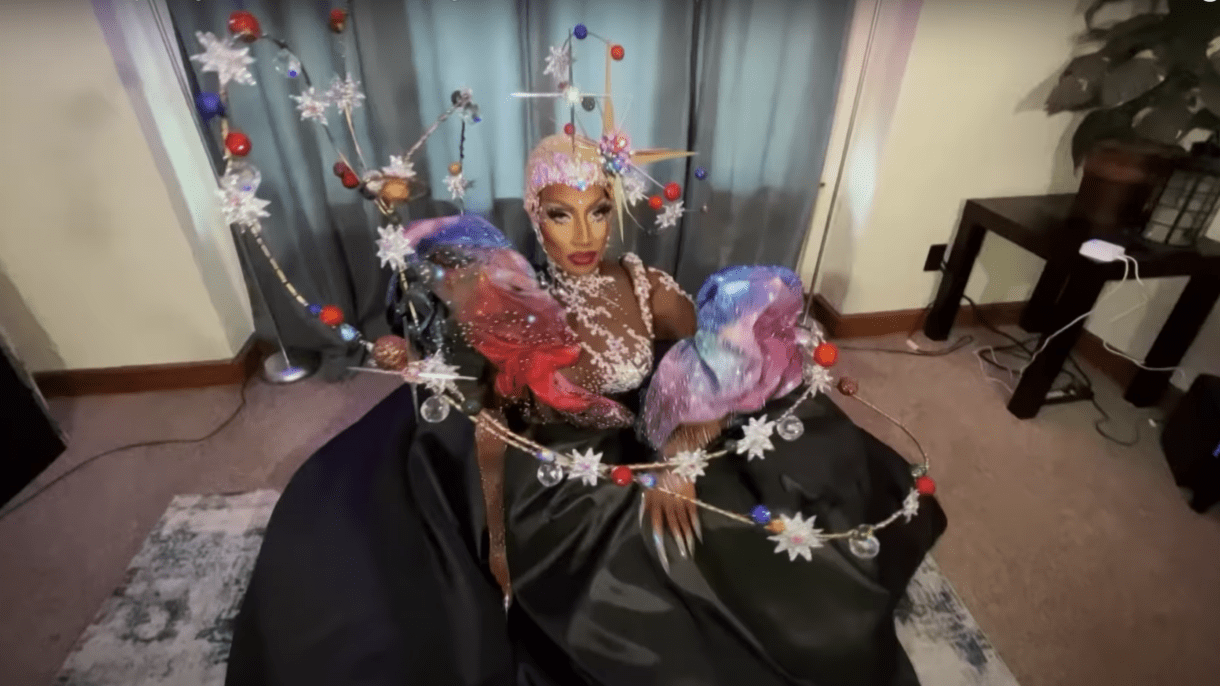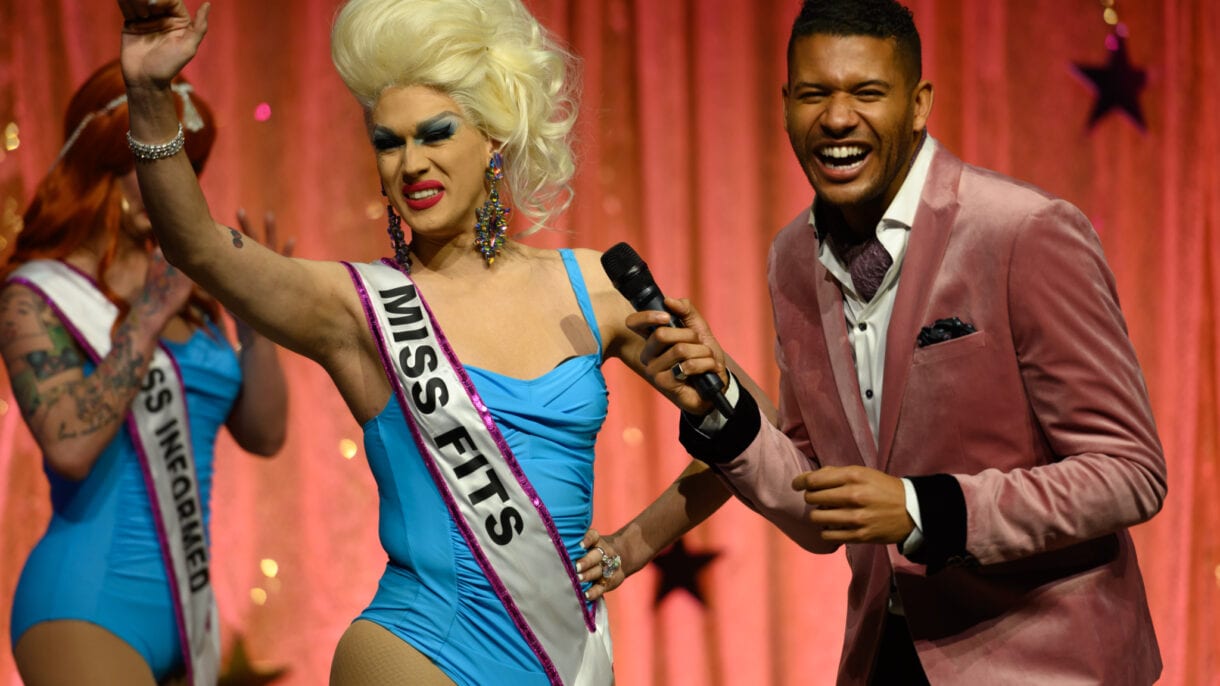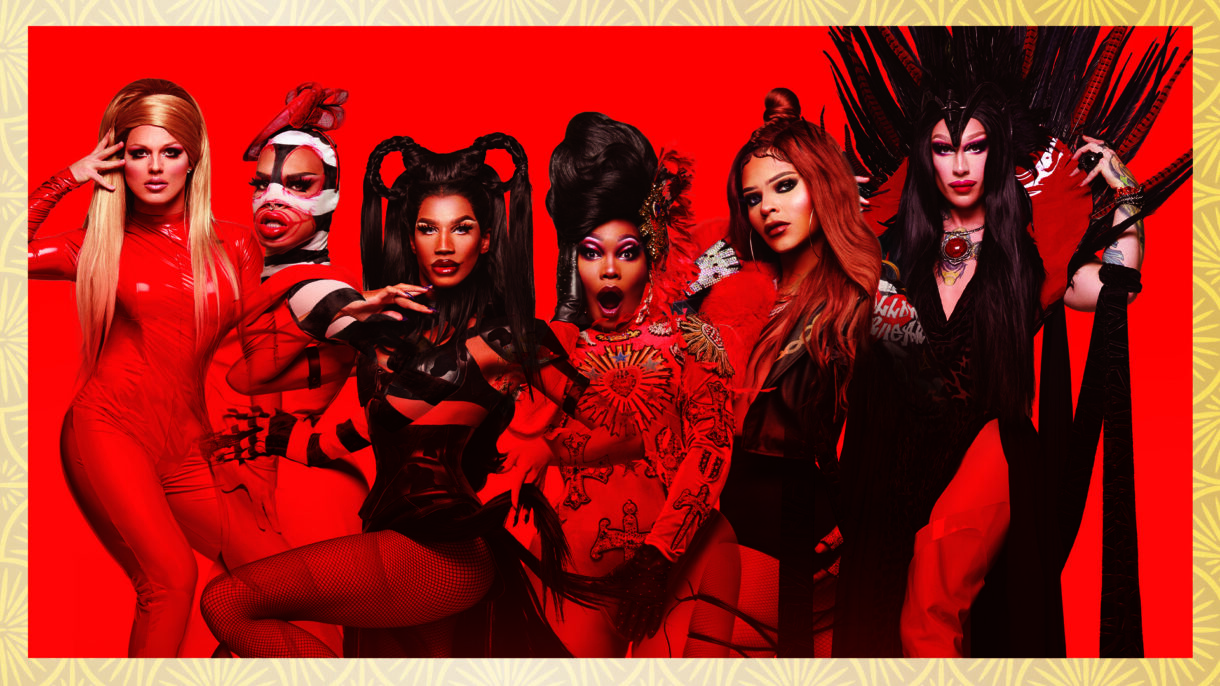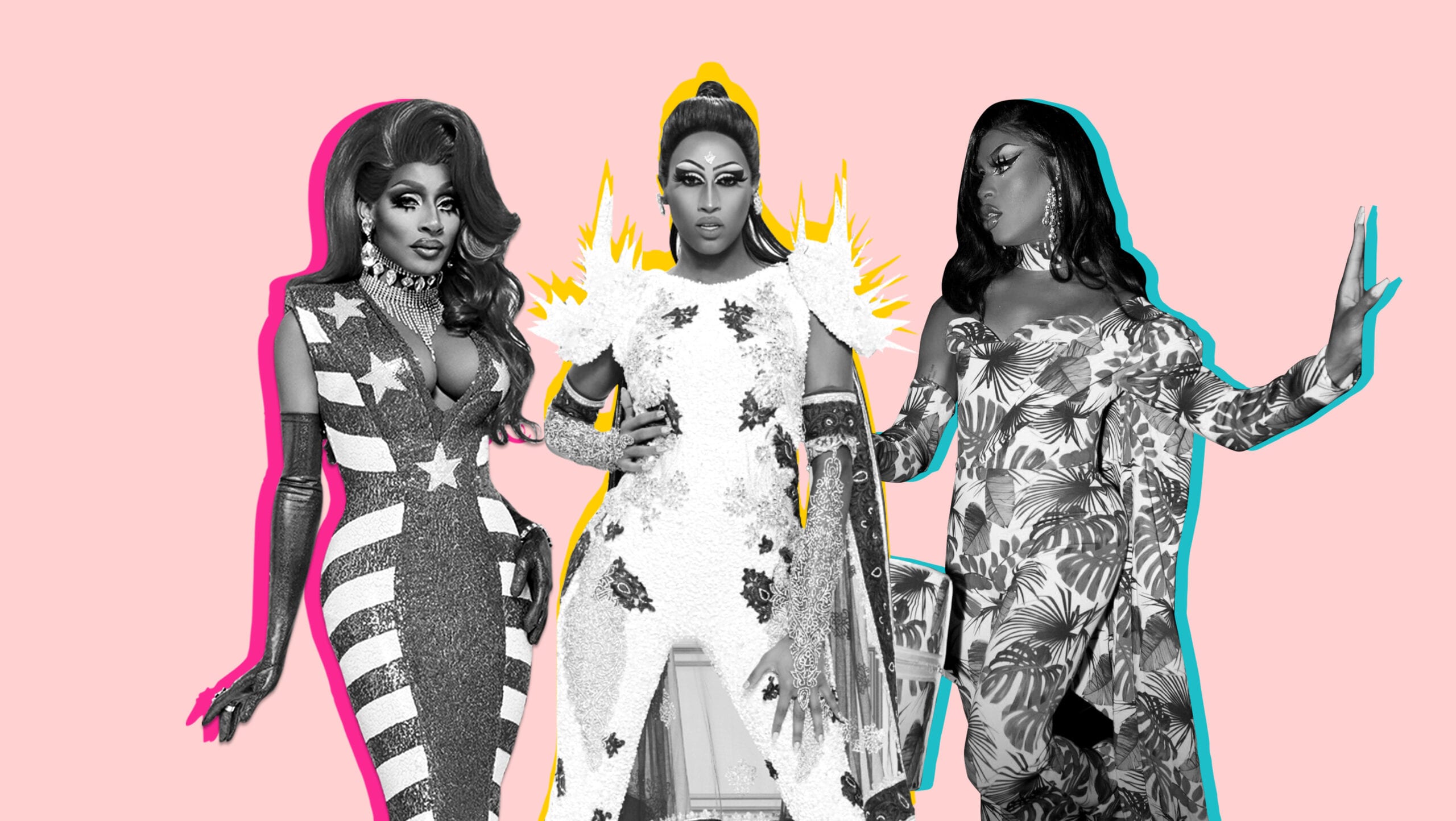It was February 2019 and RuPaul’s Drag Race fandom had just witnessed the near-universally loathed finale of All Stars 4. (The words “winner winner two chicken dinners!” will haunt me for the rest of my days as a Drag Race recapper.) I questioned what it would take for RuPaul’s Drag Race to pull itself out of the tailspin it had been in since the 2017 move from the niche and queer-focused Logo to the more mainstream VH1. As the series increasingly targeted a broader audience, it sacrificed much of what made it special in the early 2010s. My post-All Stars 4 suggestions, as well as the many that the greater fanbase put forth, were made with the understanding that, as Season 11 had already been shot, improvements couldn’t be expected until 2020. And while October 2019’s RuPaul’s Drag Race UK was a drastic improvement over both All Stars 4 and Season 11, it remained to be seen if that spinoff would be an aberration or a good sign for the future. Surprisingly and delightfully, it was the latter: Season 12, All Stars 5 and the first season of Canada’s Drag Race all showed commitment to growth and change. None of those seasons were perfect, but each had much worth recommending along with a trio of stellar champions. Suffice it to say that a year that put Jaida Essence Hall, Shea Coulée and Priyanka in the winners circle is a pretty damn good year of Drag Race. It’s not hard to envision, though, a world in which Drag Race 2020 went much further awry. All sorts of forces—both internal and external—threatened the franchise: COVID-19, a proposed channel hop to the premium (and more pricey) Showtime for All Stars, some terrible judging from a new spin-off panel, some perceived production favouritism across all three seasons and, of course, the spectre of Sherry Pie. That Drag Race triumphed this year is a testament to the ingenious, resilient spirit of drag—but it’s also a cautionary tale about what a tightrope this franchise is walking as it grows bigger and bigger.

Jaida Essence Hall in the finale of Season 12. The socially distant format was a series high point. Credit: Courtesy VH1
Let’s start with kudos, because there are plenty to go around. The coronavirus pandemic alone would be enough to knock most reality shows off their axis—much less a franchise with three different competitive seasons (and two non-competitive spinoffs, Secret Celebrity Drag Race and RuPaul’s Drag Race: Vegas Revue) airing in one year. And since so much of the benefit of a Drag Race appearance is an increase in bookings, the sudden closure of bars and clubs threatened the series and its current and former competitors even more. But as the saying goes: Necessity is the mother of invention. Season 12 pivoted to a virtual reunion that was light and fun—a smart fit for a cast that was largely positive and joyful. (I know there was some expectation on fans’ part that the reunion would tackle the Sherry Pie of it all, but that always felt like a far-fetched possibility to me.) More impressive was the physically distant finale, which really reinvented the format in a unique, fun way. Expectations were low going in, with many (including myself) making “Lip Sync for the Zoom” jokes. But a round tasking the top three performers—Jaida Essence Hall, Crystal Methyd and Gigi Goode—with staging their own digital drag shows made for one of the best finale challenges we’ve ever seen. It borrowed a bit from Drag Race Thailand, which gives its finalists similar creative freedom for their last performance. The results were spectacular—particularly Crystal’s “I’m Like a Bird” performance. It’s one of the major changes to Drag Race this year that I’d like to see continue. Another positive change: Diversifying the kinds of seasons we’re getting. Season 12 was a pretty light season, featuring minimal drama besides one memorable Untucked fight. (“Fuck you, fuck you, fuck you, fuck you. Imma worry about Heidi!” Heidi N. Closet, your Miss Congeniality! I miss her on my TV screens every day.) All Stars 5, on the other hand, really leaned into the drama, thanks to a crew of old-school queens not afraid to stir up shit. India Ferrah, a largely forgettable character in Season 3, became the biggest instigator in All Stars 5, throwing out an accusation against her sister Alexis Mateo that gave us one of the most entertaining All Stars episodes ever. Canada’s Drag Race managed to be both fun and dramatic, but unlike the U.S. seasons before it, didn’t deliver the same level of fashion and high-concept looks. This made it more reminiscent of the rougher early seasons of the show. I’m still a bit perplexed why the season drew such a vitriolic fan response that the show’s social media accounts had to step in. Yes, the judging was a mess, but queens themselves received a ton of hate, too. But from my perspective, it was a very promising first season of a spinoff.

Though round around the edges, and on social media, "Canada's Drag Race" was a welcome addition to the franchise. Credit: Courtesy of Bell Media
That increasingly hostile fan response, though, wasn’t exclusive to Canada’s Drag Race. All three seasons drew remarkably strong reactions. The responses to Season 12 and All Stars 5 confused me less, largely because stans for individual queens were so passionate and the drama in All Stars 5 lent itself to wild and passionate feelings. But even typing that feels absurd: We have come to expect a torrent of hateful responses, because that’s what we’ve seen with Drag Race for so many seasons now. And the problem isn’t getting better; left with little to do in quarantine, it seems like fans only had more time to be cruel online. It’s unacceptable that Widow Von’Du, for example, felt so belittled and bullied that she threatened to quit drag. And this wasn’t in the middle of her season—it was at the end of August. That’s how bad the situation is: A queen whose season ended in May is still receiving a lot of hate. Canada’s Drag Race speaking out against the hate on social media is a good first step. I’m hopeful the main series’ social accounts (plus those of World of Wonder, RuPaul, etc.) will follow suit going into the next seasons. However, it’s notable that Ru and the show actually tried to curb fan response before, when Jasmine Masters received racist messages and death threats during Season 7’s broadcast. Unfortunately, Ru’s message didn’t stick; it’s the kind of thing that needs to be repeated over and over until the fandom gets the message. Directly addressing the racism that exists within drag culture and its fandom is vital—especially now, as the broader media and entertainment industries are reckoning with racial inequality. My biggest hope for the show is a change in how it casts queens. I’m still inclined not to blame VH1 or WOW for the Sherry Pie incident. New York City queens have largely said they didn’t know anything about Sherry before her accusers came forward, and the background check that queens go through before appearing on the show obviously didn’t reveal anything since she has no criminal record. (I do think VH1’s initial response to the story simply pointing to Sherry’s own statement was insufficient, but I credit them for turning things around the next day and disqualifying her.) Season 11 winner Yvie Oddly had the best response, in my mind: This is a wake-up call for casting to “look for their new role models in the intersections of our community that are still at the highest point of discrimination and hate.” She followed it up in a reply to specify that she wanted the casting to look for trans, AFAB and non-binary queens. “The system as it is leads down the path to more gross abuse of power,” she tweeted. “Let’s shift that power back to those who REALLY need it.” There was some representation of these groups this year: Season 12 featured quite a few queens who identify as non-binary—Gigi Goode even came out as such on the show—while All Stars 5 winner Shea Coulée publicly identifies as such and uses they/them pronouns out of drag. Canada’s Drag Race featured Two-Spirit queen Ilona Verley, who spoke proudly of wanting to represent for non-binary and trans people on the show, and non-binary queen Scarlett Bobo, who talked about the need to support and uplift trans, non-binary and AFAB queens in their final speech. This is a start, but Drag Race still needs to be even more inclusive in casting. There are a lot of trans queens in Drag Race’s herstory who either came out during or after the show—bring them back for All Stars! Find rising trans and AFAB talent and cast them for regular seasons! That kind of diversity is not only good on a representational level, but it will also be a tremendous boon to the show. Drag Race, at its best, is a melding of LGBTQ2 people of differing backgrounds and experiences showing off their particular, unique style of drag. Bringing in more competitors who can speak to their own individual experiences as a drag artist (dare we hope for a drag king in the wake of Landon Cider’s win on Dragula Season 3?) can only help the series feel more representative of the diverse world of drag.

The cast of "RuPaul’s Drag Race: Vegas Revue" Credit: Courtesy VH1
It’s a small miracle we got as much great Drag Race as we did this year, considering just how much could have toppled the franchise. Against all odds, Drag Race is actually wrapping its 2020 run in stronger shape than ever. But it can’t be understated, so much could’ve gone so much worse: If VH1 and WOW hadn’t disqualified Sherry and re-edited Season 12, if they hadn’t been so clever in reinventing the reunion and finale for the Zoom era, if All Stars 5 had indeed moved to Showtime, if the Canada’s Drag Race cast hadn’t been so good despite some iffy judging. But success should not be taken as a sign to stay the course. Some improvements should absolutely be kept: keep innovating with new challenge formats; keep boosting and rewarding queens of colour—truly, it’s fantastic we got two Black winners, a Black Miss Congeniality and the first South Asian winner this year; keep offering us different kinds of seasons, to keep the franchise fresh. That’s all great. (As is bringing back the puppets mini-challenge—now bring back Reading Is Fundamental, too!) But moving forward in other areas is also key. This includes inclusive casting and working to tamper down fan response, but it should also include less obviously favouring certain queens in the production and edit of the show. Jaida’s win wasn’t heavily set up by the show, but it was no less satisfying when it came to be. In fact, I’d argue it was more satisfying. Drag Race listened to fan responses and changed some of its own habits this year; I’m hopeful they continue down that road. I’m still enjoying Vegas Revue, and I’m eager to check out Drag Race Holland, but for now, I’m also happy to take a break from the North American Drag Race competition series. We can take a breath, reset and prepare ourselves for the show’s return next year. Even though it sometimes feels like it’s been on for too long now, we will soon find ourselves desperately wishing it back on our airwaves. It’s the Drag Race cycle, folks, and we’re all just spinning around in it.


 Why you can trust Xtra
Why you can trust Xtra


